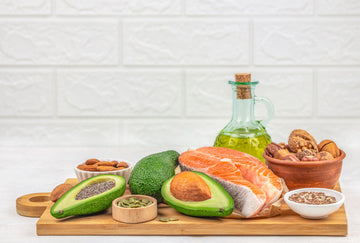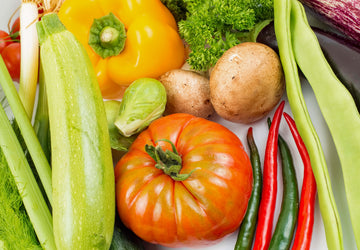The ketogenic diet is a diet that aims to reduce carbohydrate intake to the point where the body enters the metabolic state of ketosis. In ketosis, the body uses fat as its primary energy source instead of glucose, which comes from carbohydrates. A key factor in the success of this diet is the conscious control of the carbohydrates consumed. The focus is not on the total carbohydrates of a food, but on the so-called net carbohydrates - a concept that plays an important role in the keto diet.
Net carbohydrates are the carbohydrates that the body can actually use and that affect blood sugar levels. They are calculated by subtracting indigestible components such as fiber and certain sugar alcohols from the total carbohydrates. This distinction helps to select low-carb foods and maintain ketosis.
Correctly calculating net carbohydrates requires some attention, but is a valuable basis for a successful keto diet. But how exactly does this calculation work, and which foods are particularly good for keeping the carbohydrate content low? In this article, we'll show you how to calculate net carbohydrates and integrate them into your diet plan.
What are net carbs?
Net carbs are the carbohydrates that the body digests and uses for energy. Fiber and certain sugar alcohols that are not metabolized are subtracted from the calculation. This makes it possible to incorporate low-carb foods such as vegetables, nuts or special sugar substitutes into the keto diet without affecting the state of ketosis.
How do you calculate net carbs?
The calculation is simple and follows these steps:
Determine total carbohydrates: Read the food's nutrition label to find out the carbohydrate content.
Remove fiber: Remove the fiber because it is not digested by the body.
Consider sugar alcohols: Subtract sugar alcohols such as erythritol completely. For other sugar alcohols, such as maltitol, a portion should be counted as usable carbohydrates.
Example:
One product contains 15 g total carbohydrates, 8 g fiber and 5 g erythritol.
Net Carbs = 15g – 8g – 5g = 2g.
Why are net carbs important on the keto diet?
In the keto diet, the recommended intake of net carbohydrates is usually between 20 and 50 grams per day. This value varies from person to person, but careful monitoring helps to stabilize ketosis.
Low-net-carb foods
Certain foods are particularly suitable for the keto diet because they contain few net carbohydrates and can therefore be easily integrated into the diet plan. Non-starchy vegetables such as spinach, zucchini, broccoli and cucumbers not only offer variety on the plate, but can also serve as a basis for many creative dishes. These vegetables are also flexible in their preparation - whether raw, steamed or fried - and complement meals in a tasty way.
Nuts and seeds also play an important role in the keto diet. Almonds, macadamia nuts and chia seeds are great as a filling snack or as a topping for salads and desserts. They add healthy fats to the menu while helping to keep the net carb count low.
For those who don't want to miss out on a sweet note in their diet, sugar substitutes such as erythritol and stevia are a popular option. These alternatives make it possible to sweeten drinks and foods without significantly increasing the carbohydrate content. They can be used in a variety of ways and are therefore a practical addition to the ketogenic diet.
Avoid common mistakes
A common misconception is to only look at the total carbohydrates in a food. Many processed products contain hidden sugar alcohols or additives that can increase the net value. Caution should also be taken when calculating sugar alcohols such as maltitol, as these are partially utilized.
Net carbohydrates as the key to control
Net carbohydrates are an essential concept for the keto diet. With the right calculation and food selection, you can design your nutrition plan specifically and keep ketosis stable. In addition to the theory, it helps to gain practical experience in the kitchen and adapt recipes to optimize carbohydrate intake individually.





